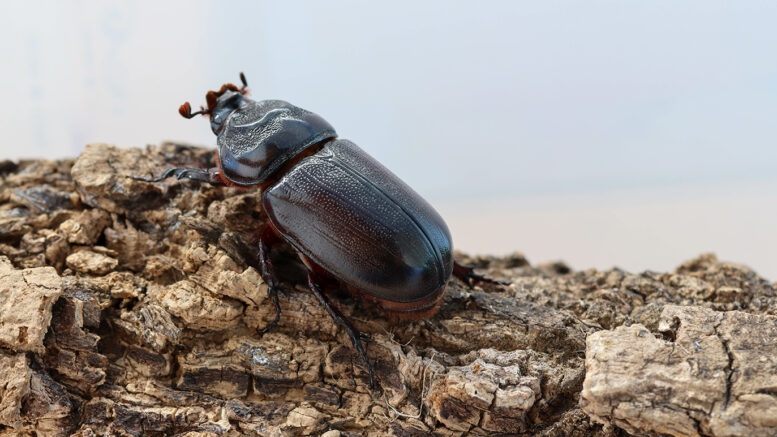The state of Hawaii has established an interim rule that restricts the movement of decomposing plant material—like compost, wood or tree chips, mulch, potting soil, palm plants and other landscaping products that may harbor the coconut rhinoceros beetle (CRB) from infested areas to non-infested areas in the state.
The interim rule designates the island of Oahu as a CRB-infested area and is subsequent to other interim rules that were issued in June 2022 and October 2023.
The rule also restricts the movement of palm plants higher than four feet in height, which will enable closer inspection of palm crowns where CRB are most likely to bore into a tree, the Hawaii Department of Agriculture (HDOA) said.
The interim rule is valid for one year, while HDOA finalizes a permanent rule that is slated to be considered by the Hawaii Board of Agriculture later this month.
Any individual, company or organization that violates the rule will be charged with a misdemeanor and fined not less than $100 and up to $10,000. Penalties for a second offense committed within five years will require the violator to pay for the cost of clean-up and decontamination fees to remove contaminated materials, as well as the cost to fully eradicate any CRB infestations caused by the violation. Repeat violators will be fined not less than $500 and up to $25,000.
HDOA said plant quarantine branch inspectors at all island ports are concentrating efforts on inspections of potential CRB host material transported between islands.
Residents on all islands are asked to be vigilant when purchasing mulch, compost and soil products and to inspect bags for evidence of entry holes. An adult beetle is about two inches long, all black and has a single horn on its head. CRB grubs live in decomposing plant and animal waste. Adult CRB prefer to feed on coconut and other larger palms and are a major threat to the health of these plants.
Surveillance for CRB has been ongoing on all neighbor islands, including pheromone traps at airports, harbors and other strategic locations. The traps are used for early detection of CRB infestations and are being monitored by HDOA and the University of Hawaii.
The CRB is a large scarab beetle that was first detected on Oahu in 2013. The beetle has since been detected in many neighborhoods on Oahu. In May 2023, CRB was detected on Kauai and collaborative eradication efforts continue on the island. On Hawaii Island, CRB was detected in a palm tree stump Waikoloa in October 2023 and a single CRB was found dead in a trap last month in that same area. CRB grubs were found in Kīhei, Maui, in November 2023, but have not been detected on the island since.
CRB is a serious pest of palm trees, primarily coconut palms, as the adult beetles bore into the crowns of the palms to feed on the trees’ sap. New unopened fronds are damaged in this way and when fully opened, may break and fall unexpectedly. If CRB kill or damage the growing point of the palm, the tree may die. Secondary fungal or bacterial pathogens may also attack the wounds caused by CRB, thereby killing the tree as well. Tree mortality after CRB attack has been reported to be anywhere from 10 percent to 50 percent. Dead trees then become a safety hazard as they may fall unexpectedly after the trunk rots, potentially resulting in bodily injury or property damage.
Follow us on social media:

Be the first to comment on "Hawaii restricts movement of compost, mulch"